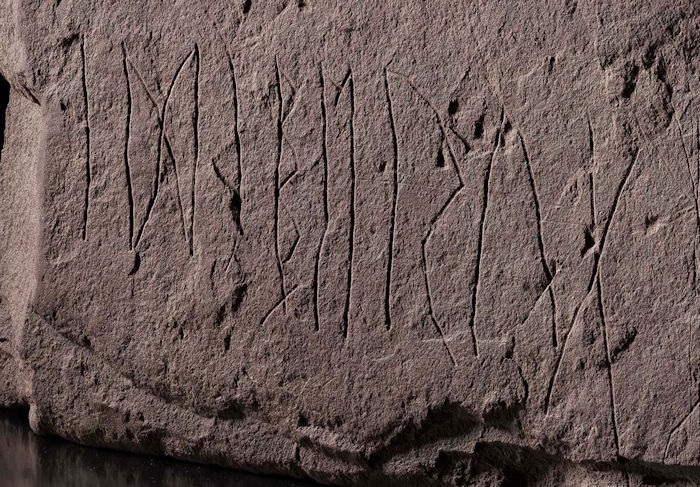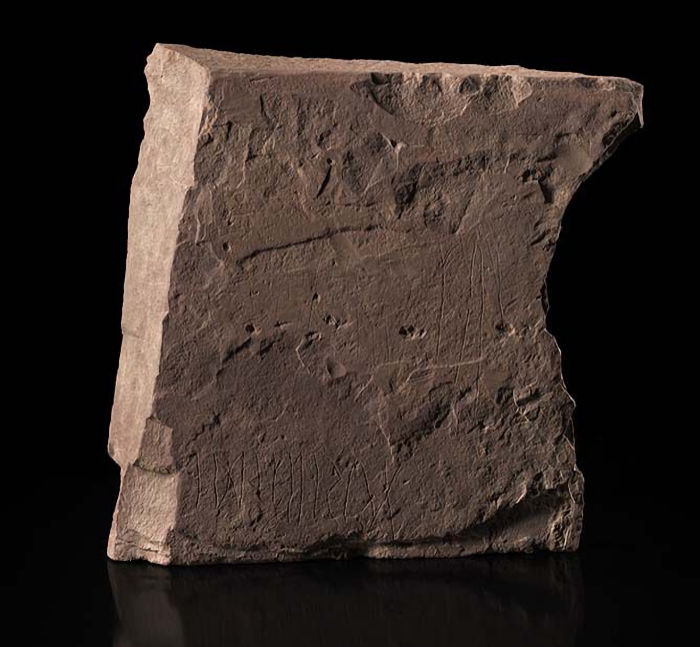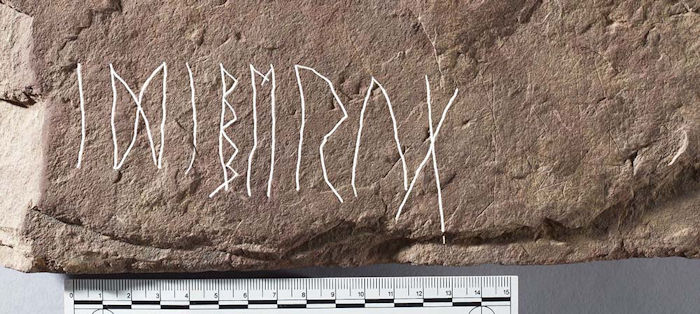Conny Waters – AncientPages.com – The world’s oldest known runestone is currently on exhibition, attracting international attention among runic scholars and archaeologists. The stone has inscriptions up to 2,000 years old and date back to the earliest days of the enigmatic history of runic writing. Scientists are eager to decipher the message on the stone.

These runes were inscribed between the years 1 and 250 AD and date back to the earliest days of the enigmatic history of runic writing. Credit: PH๏τo – Alexis Pantos/KHM, UiO
The story goes back to the autumn of 2021, archaeologists of the Museum of Cultural History investigated a grave field by Tyrifjorden in Ringerike. They discovered a stone with several runic inscriptions in one of the graves. Burnt bones and charcoal from the grave reveal that the runes were inscribed between 1 and 250 AD. This makes it the earliest known rune stone.
The stone has been named after the place of discovery and is now called the Svingerud stone.
Sometime between 1,800 and 2,000 years ago, someone stood near Tyrifjorden and carved runes into the 31×32 cm block of reddish-brown Ringerike sandstone. They spoke an early form of the ancient Nordic language, the ancestor language of modern Nordic languages in Scandinavia today.
A woman called Idibera?
Is the name inscribed on the stone that of the person who is buried there? On the front face of the stone, eight runes stand out clearly among other inscriptions. Converted into Latin letters they spell: idiberug. Is the stone made “for Idibera”? Or was the intention to write the name ‘Idibergu’ or the kin name ‘Idiberung’?

Credit: PH๏τo – Alexis Pantos/KHM, UiO
The ways of writing older rune inscriptions varied a lot, and the language has changed considerably from the time these runes were carved until the Viking Age and the Middle Ages. Interpreting the messages on the stone is therefore a challenge, the Historical Museum informs.
Playful writing?
The stone has several types of inscriptions. Some lines form a grid pattern, there are small zigzag figures and other interesting markings. Not all make linguistic sense, and one can get the impression that someone has imitated, explored or played with writing. Perhaps the carver were in the process of learning how to carve runes.
There is still a lot of research to be done on the Svingerud stone, but without doubt, scholars will obtain valuable knowledge about the early history of runic writing and the custom of making rune stones.
An alphabet of its own
Runes are the oldest known form of writing in Norway. We know that runes were in continuous use from around the beginning of Common Era and throughout the Viking Age and the Middle Ages. The runic alphabet is called the futhark, because the first six runes are “f u th a r k”. On the Svingerud stone we also find an inscription with the first three runes of the alphabet ᚠ (f), ᚢ (u) and ᚦ (th).

Credit: PH๏τo – Alexis Pantos/KHM, UiO
Runes are written signs that represent different sounds. Some look like Latin capital letters, such as ᛒ (B). Some runes resemble Latin letters, but stand for a different sound: ᛖ = e. Others do not resemble characters we use today: ᛈ denotes p. The Latin alphabet may inspire the runic script, but its exact origin is uncertain. Those who invented the script gave the runes their own twist and changed the order of the characters.
Runes played an essential part in the lives of the Vikings. Unfortunately, there are few remains of runic writing on paper from the Viking era. Nevertheless, thousands of stones with runic inscriptions have been found where Vikings lived.
It will take a while before experts can decipher all of the inscriptions on the mysterious Svingerud Stone remains a mystery, but it is undoubtedly a valuable archaeological find.
Written by Conny Waters – AncientPages.com Staff Writer





